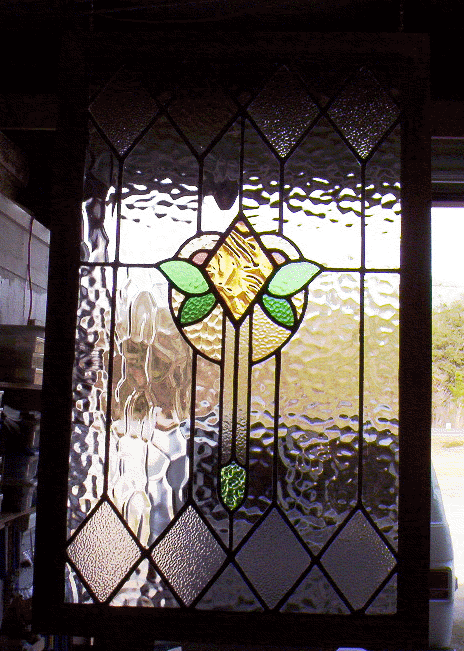

Baylus discovered that the port town of Wilmington, NC used to belong to Maurice Moore, the founder of Brunswick Town. Gov. George Burrington voided his grant here and began "Newton" or Wilmington, the town that flourished and ended Brunswick Town's popularity. This action was probably ordered by the Duke of Newcastle in 1731.
Glass painting by Baylus C. Brooks. Done for St. Mary's Episcopal of Madison, FL.
[To right:] Circa 1900 stained glass window repaired by Brooks.
Baylus has worked with the CSS Neuse conservation efforts of ECU and digitized Leslie Bright's original photos (over 720) from the 1970s. He has also worked on the Modern Greece project as well as the 27 documents of the John Alexander Lillington Collection held by the Pender County Public Library's Annex and Archives.
These are photographs of work performed by Baylus C. Brooks at various times. Please contact us if you have any questions about when, where, or how these were accomplished.
PHOTOS



Edward Moseley Grant from 1730 on the Northeast Cape Fear River (conserved and restored).



Installation of "Jesus Knocking" window for McCall's Chapel in Branford, FL.

For two years, Brooks performed extensive research with the Lost Colony Research Group, determining the precise location of John Lawson's "Indian Town." This location has never before been known. He has published an article on the town in the April 2014 edition of North Carolina Historical Reveiew, titled "John Lawson's 'Indian Town' on Hatteras Island, North Carolina." [Below:] Baylus with Dawn Taylor and Anne Poole of the Lost Colony Research Group. The director, Roberta Estes not shown.


Original grant, deed, and survey analysis were all examined from 1712 to 1963. Overlays were used to demonstrate the loss of shoreline and to restructure the original "William Elks and the Rest of the Hatteras Indians" grant of 1759, that began with the town itself. This fairly recent survey of the heirs of "C.B. Farrow" at King's Point was used to show the location. An archaeological dig was performed at this location, but the stratigraphic features of Hatteras have been altered drastically by the sea and sound, indundated by storm activity. No results came of the dig, most likely for this reason. Also, the town area has been contnuously occupied by probably Indian descendants since at least 1700 and probably at the time of the first Roanoke Voyages (Dorothy Block shows thousands of years of settlement). These could be the Croatoan Indians met by Gov. John White and Ralph Lane in 1585.
The photos below are a few of the 720 photos taken by Leslie Bright's team in the mid-70s during conservation of the CSS Neuse, now housed in a brand new facility in downtown Kinston. Baylus Brooks drove to Fort Fisher to gather the negatives (most of the photos had not been made into prints yet) and digitize them. Some actual photographs and documents were digitized as well.



we are only a phone call away